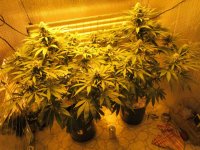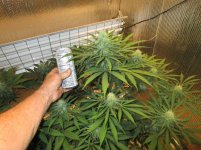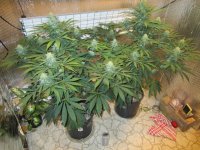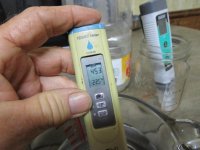Three Berries
Active member
Mine is hard well water at 440 ppm/7.4 pH. But when it rains for a couple days both the ppm count and pH go down. Seeing as the hardness is mostly Calcium carbonate and the pH high to start is good for when the nutes get added as it settles out around 6.3-6.5 when done. Using rain water and a lot of pH up needs to be done.
If your roof has an anti-algae treatment (copper) it may harm with low rainfall. I've got three 55 gallon barrels set up and a 1/4" will fill them up from 1/4 of the roof. So if the rain amount is anything worth talking about it should flush off the bad stuff.
My rainwater is not consistent pH though. But usually is around 6.4-6.5, sometimes 7.0 though. PPM around 20.
If your roof has an anti-algae treatment (copper) it may harm with low rainfall. I've got three 55 gallon barrels set up and a 1/4" will fill them up from 1/4 of the roof. So if the rain amount is anything worth talking about it should flush off the bad stuff.
My rainwater is not consistent pH though. But usually is around 6.4-6.5, sometimes 7.0 though. PPM around 20.






